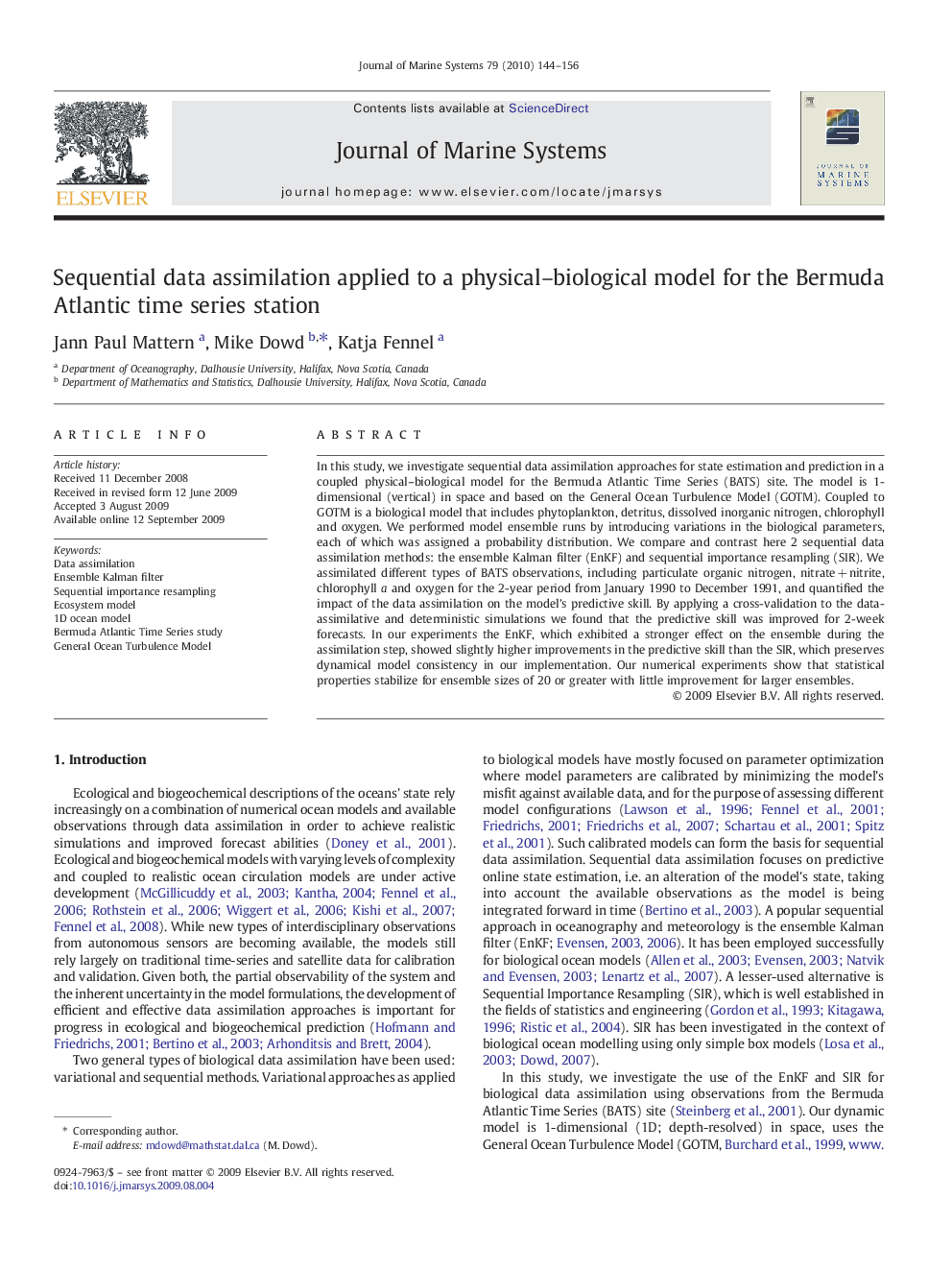| Article ID | Journal | Published Year | Pages | File Type |
|---|---|---|---|---|
| 4548716 | Journal of Marine Systems | 2010 | 13 Pages |
In this study, we investigate sequential data assimilation approaches for state estimation and prediction in a coupled physical–biological model for the Bermuda Atlantic Time Series (BATS) site. The model is 1-dimensional (vertical) in space and based on the General Ocean Turbulence Model (GOTM). Coupled to GOTM is a biological model that includes phytoplankton, detritus, dissolved inorganic nitrogen, chlorophyll and oxygen. We performed model ensemble runs by introducing variations in the biological parameters, each of which was assigned a probability distribution. We compare and contrast here 2 sequential data assimilation methods: the ensemble Kalman filter (EnKF) and sequential importance resampling (SIR). We assimilated different types of BATS observations, including particulate organic nitrogen, nitrate + nitrite, chlorophyll a and oxygen for the 2-year period from January 1990 to December 1991, and quantified the impact of the data assimilation on the model's predictive skill. By applying a cross-validation to the data-assimilative and deterministic simulations we found that the predictive skill was improved for 2-week forecasts. In our experiments the EnKF, which exhibited a stronger effect on the ensemble during the assimilation step, showed slightly higher improvements in the predictive skill than the SIR, which preserves dynamical model consistency in our implementation. Our numerical experiments show that statistical properties stabilize for ensemble sizes of 20 or greater with little improvement for larger ensembles.
